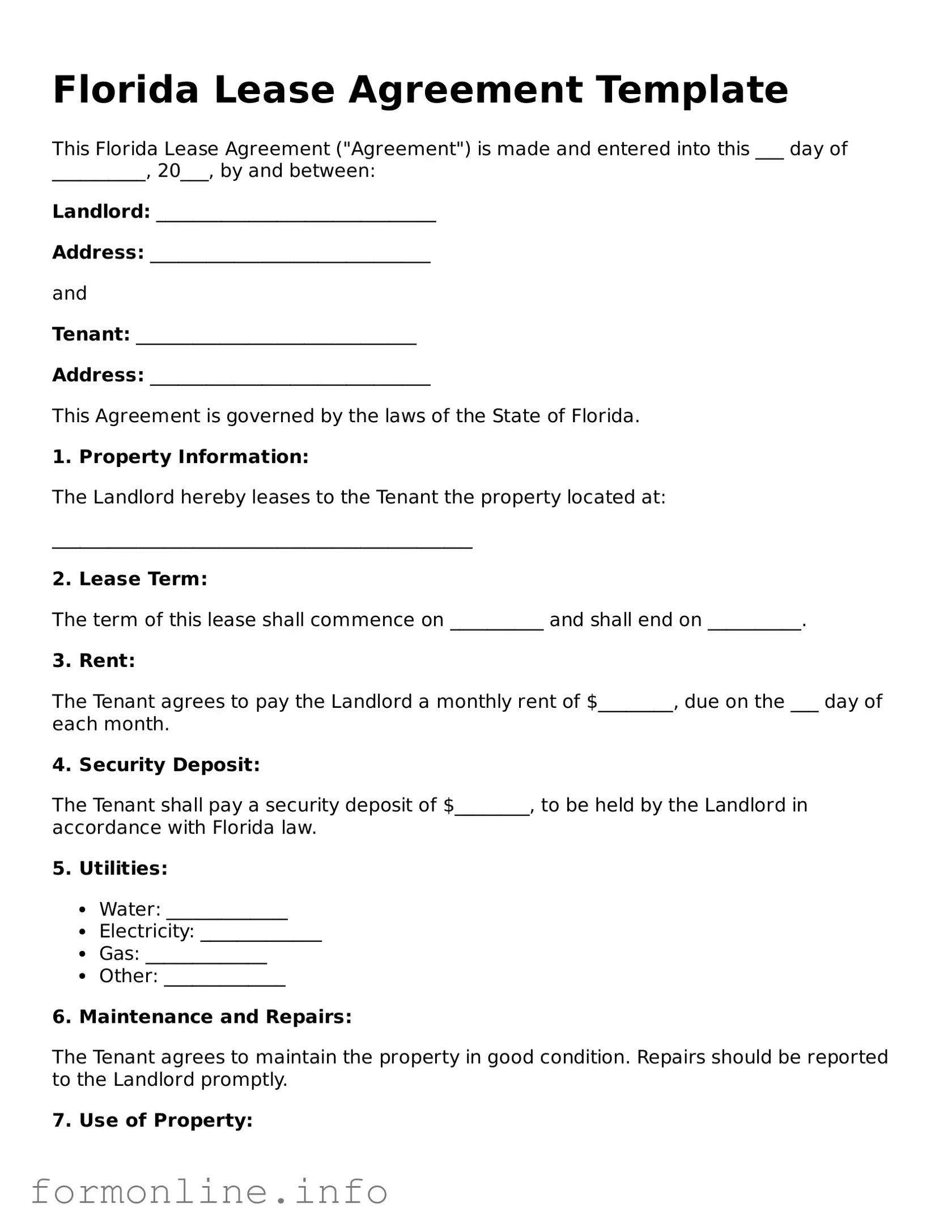Florida Lease Agreement Template
This Florida Lease Agreement ("Agreement") is made and entered into this ___ day of __________, 20___, by and between:
Landlord: ______________________________
Address: ______________________________
and
Tenant: ______________________________
Address: ______________________________
This Agreement is governed by the laws of the State of Florida.
1. Property Information:
The Landlord hereby leases to the Tenant the property located at:
_____________________________________________
2. Lease Term:
The term of this lease shall commence on __________ and shall end on __________.
3. Rent:
The Tenant agrees to pay the Landlord a monthly rent of $________, due on the ___ day of each month.
4. Security Deposit:
The Tenant shall pay a security deposit of $________, to be held by the Landlord in accordance with Florida law.
5. Utilities:
- Water: _____________
- Electricity: _____________
- Gas: _____________
- Other: _____________
6. Maintenance and Repairs:
The Tenant agrees to maintain the property in good condition. Repairs should be reported to the Landlord promptly.
7. Use of Property:
The property shall be used solely for residential purposes. The Tenant shall not engage in any unlawful activities.
8. Alterations:
Tenant must obtain written consent from the Landlord before making any alterations or improvements to the property.
9. Governing Law:
This Agreement shall be governed by the laws of the State of Florida.
10. Signatures:
By signing below, the parties agree to the terms and conditions of this Lease Agreement.
Landlord Signature: _____________________________ Date: ____________
Tenant Signature: ______________________________ Date: ____________
